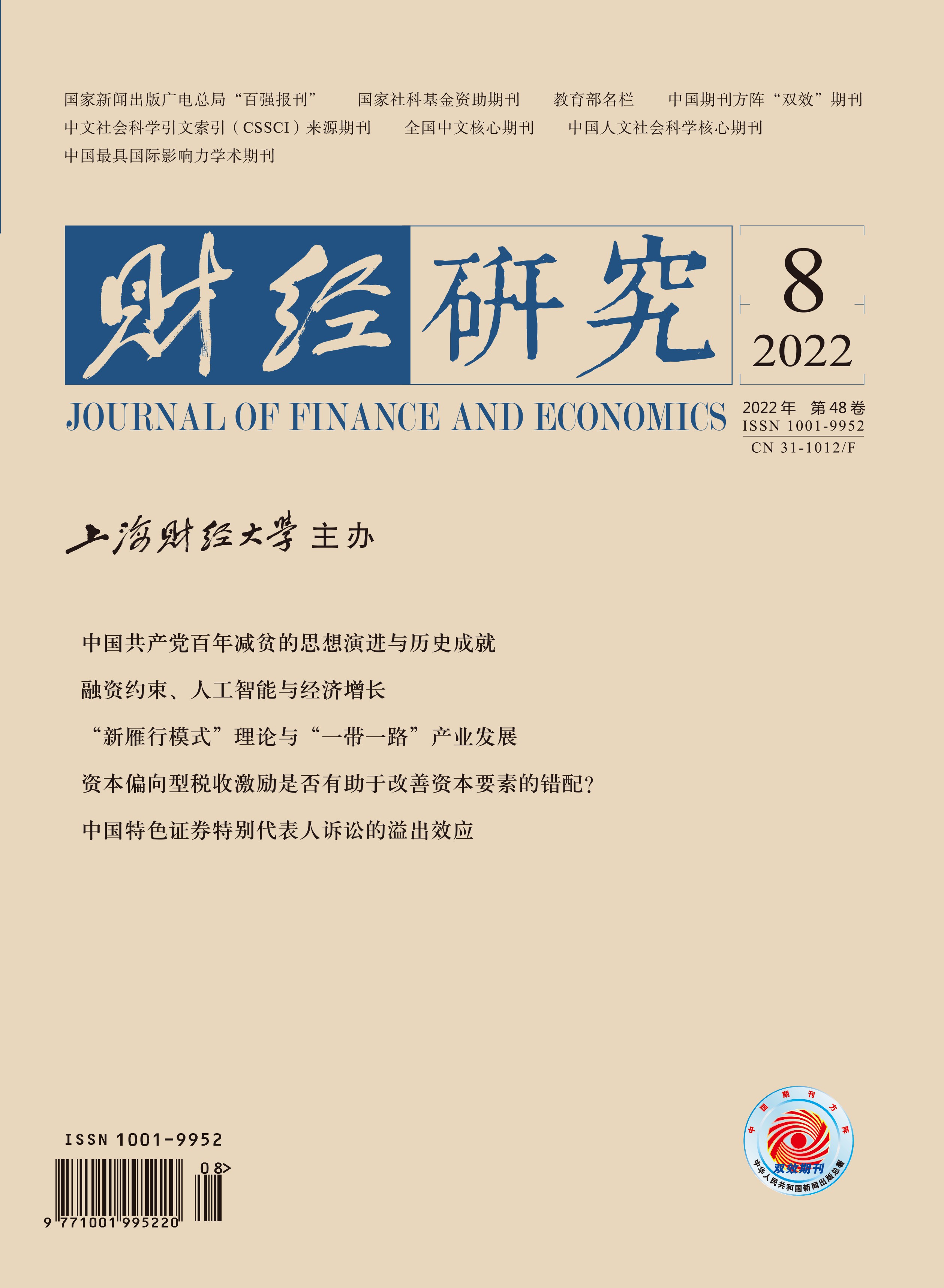面对错综复杂的国内外各种风险挑战,中国发展的基础支撑可能仍然在乡村。新时代脱贫攻坚目标任务虽已如期完成,但要全面推进乡村振兴,必须防止规模性返贫现象的发生。然而部分脱贫户由于自身发展意愿及能力不足,即脱贫内生动力不足,同时家庭资产积累较少,存在脆弱性脱贫情况。脱贫群体内生动力的提升,是保证高质量脱贫和守住不发生规模性返贫的关键。为此,文章提出了脱贫内生动力理论,从需求型内生动力与手段型内生动力两方面解释脱贫内生动力影响返贫风险的内在逻辑,并从内生动力视角论述了如何降低中国脱贫家庭的返贫风险。利用来自粤东、粤北地区相对贫困村的实地调查一手数据,对该理论进行了实证检验。研究发现:(1)提高脱贫户内生动力水平,能够显著降低其家庭返贫风险,这一效应在“因学致贫”的家庭中更加明显。(2)脱贫内生动力通过提高脱贫家庭的风险抵御能力,从而对返贫风险产生抑制作用。(3)夏普分解结果表明,手段型内生动力对于脱贫户的整体内生动力水平的贡献度要大于需求型内生动力。因此,文章认为应重点关注脱贫户的内生动力,短期内优先发展脱贫家庭的手段型内生动力,长期培育需求型内生动力,持续推进教育帮扶,实施技能培训和降低教育成本,这对于预防脱贫户的返贫风险,夯实我国乡村振兴基础具有重要的意义。
脱贫群体的内生动力与返贫风险——来自广东省相对贫困村的微观证据
摘要
参考文献
2 高梦滔,姚洋. 农户收入差距的微观基础:物质资本还是人力资本?[J]. 经济研究,2006,(12):71−80. DOI:10.3969/j.issn.1005-913X.2006.12.030
4 侯红霞. 动力心理学视角下激发贫困群众内生动力研究[J]. 学术探索,2020,(12):86−91. DOI:10.3969/j.issn.1006-723X.2020.12.009
10 卢亚娟,张菁晶. 农村家庭金融资产选择行为的影响因素研究−基于CHFS微观数据的分析[J]. 管理世界,2018,(5):98−106. DOI:10.3969/j.issn.1002-5502.2018.05.008
16 王怡欢,张楚. 农村贫困家庭灾难性卫生支出风险及影响因素研究−基于2018年CHARLS数据[J]. 中国卫生政策研究,2021,(1):44−49. DOI:10.3969/j.issn.1674-2982.2021.01.007
21 燕继荣. 反贫困与国家治理−中国“脱贫攻坚”的创新意义[J]. 管理世界,2020,(4):209−219. DOI:10.3969/j.issn.1002-5502.2020.04.018
24 俞福丽,蒋乃华. 健康对农民种植业收入的影响研究−基于中国健康与营养调查数据的实证研究[J]. 农业经济问题,2015,(4):66−71. DOI:10.13246/j.cnki.iae.2015.04.008
28 张晓山. 巩固脱贫攻坚成果应关注的重点[J]. 经济纵横,2018,(10):1−10. DOI:10.16528/j.cnki.22-1054/f.201810001
32 Alwang J, Siegel P B, Jorgensen S L. Vulnerability: A view from different disciplines[R]. Social Protection Discussion Paper Series No.23304, 2001.
34 Azeem M M, Mugera A W, Schilizzi S. Do social protection transfers reduce poverty and vulnerability to poverty in Pakistan? Household level evidence from Punjab[J]. The Journal of Development Studies,2019,55(8): 1757−1783. DOI:10.1080/00220388.2018.1448068
35 Barrett C B, Constas M A. Toward a theory of resilience for international development applications[J]. Proceedings of the National Academy of Sciences of the United States of America,2014,111(40): 14625−14630. DOI:10.1073/pnas.1320880111
36 Bebbington A. Capitals and capabilities: A framework for analyzing peasant viability, rural livelihoods and poverty[J]. World Development,1999,27(12): 2021−2044. DOI:10.1016/S0305-750X(99)00104-7
37 Dalton P S, Ghosal S, Mani A. Poverty and aspirations failure[J]. The Economic Journal,2016,126(590): 165−188. DOI:10.1111/ecoj.12210
38 Dercon S, Singh A. From nutrition to aspirations and self-efficacy: Gender bias over time among children in four countries[J]. World Development,2013,45: 31−50. DOI:10.1016/j.worlddev.2012.12.001
39 Flechtner S. Should aspirations be a matter of policy concern?[J]. Journal of Human Development and Capabilities,2017,18(4): 517−530. DOI:10.1080/19452829.2017.1364224
40 Mickelson K D, Williams S L. Perceived stigma of poverty and depression: Examination of interpersonal and intrapersonal mediators[J]. Journal of Social and Clinical Psychology,2008,27(9): 903−930. DOI:10.1521/jscp.2008.27.9.903
41 Omotoso K O, Adesina J O, Gbadegesin T F. Children on the edge: Estimating children’s vulnerability to multidimensional poverty in post-apartheid South Africa[J]. Child Indicators Research,2020,13(4): 1155−1174. DOI:10.1007/s12187-019-09677-9
42 Sączewska-Piotrowska A. Transitions into and out of near poverty in urban and rural areas in Poland[A]. International conference 19th applications of mathematics and statistics in economics[C]. Banská Štiavnica, 2016.
43 Villa J M, Niño-Zarazúa M. Poverty dynamics and graduation from conditional cash transfers: A transition model for Mexico’s Progresa-Oportunidades-Prospera program[J]. The Journal of Economic Inequality,2019,17(2): 219−251. DOI:10.1007/s10888-018-9399-5
引用本文
周迪, 陈明成, 邱铭坚. 脱贫群体的内生动力与返贫风险——来自广东省相对贫困村的微观证据[J]. 财经研究, 2022, 48(8): 48-62.
导出参考文献,格式为:
上一篇:研发效率、知识产权保护与经济繁荣





 3776
3776  3852
3852

